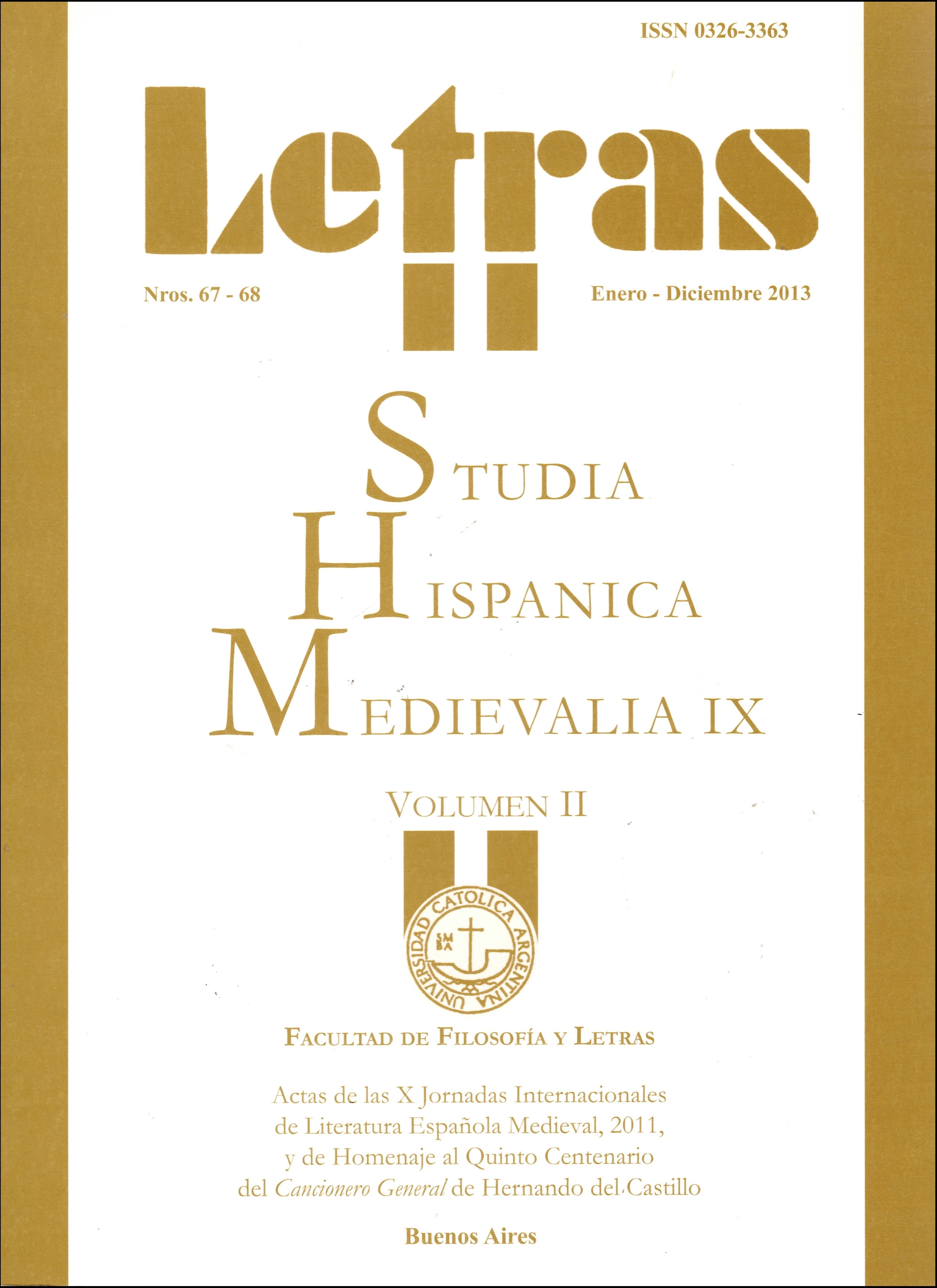La maurofilia en la poesía épica medieval
Palabras clave:
Maurofilia, Poema de mio Cid, Siete infantes de Lara, RomanceroResumen
Maurophilia as a literary tradition was codified for the first time in 1938 in an article published by the French Hispanist Georges Cirot, who explored the idealized representation of Moors in sixteenth-century literature. Yet Ramón Menéndez Pidal argued that in the fourteenth and fifteenth centuries the Castilians, far from feeling any repulsion toward the Muslims of Granada, felt attracted to their exotic civilization, the oriental luxury of dress, the splendid ornament in their buildings, and their mode of riding and fighting. Maurophilia, in sum, became fashionable. Years later, Francisco Márquez Villanueva pointed out that although literary maurophilia of the sixteenth century was influenced by a Christian humanism sensible to all sorts of realities marginalized by the official world, the roots of maurophilia could be found in the Romancero of the fifteenth century. In effect, the romances fronterizos are abundantly concerned with love as well as war, and often idealize relations between Moors and Christians. They are, for the most part, showcases for Moorish regalia and chivalric pomp. According to María Rosa Lida, the positive depiction of Moors appeared for the first time in works by Don Juan Manuel. In the Libro de los estados the Moors are shown as courageous warriors, and in the Conde Lucanor there are several Moorish kings who behave as magnanimous and discreet rulers. But the Arab as a wise man or an exemplary figure appeared already in one of the sources of the Conde Lucanor, the Disciplina clericalis composed at the beginning of the twelfth century by Pedro Alfonso. On the other hand, the earliest medieval epic texts, the Poema de mio Cid and the Siete infantes de Lara, evince a sympathetic view of an enemy with whom Christians frequently allied, and with whom they lived.Downloads
Download data is not yet available.
Descargas
Publicado
2019-04-23
Cómo citar
Zaderenko, I. (2019). La maurofilia en la poesía épica medieval. Letras, (67-68), 185–194. Retrieved from http://649820.fgwnw.asia/index.php/LET/article/view/1805
Número
Sección
Ponencias
Licencia

Esta obra está bajo una Licencia Creative Commons Atribución-NoComercial-CompartirIgual 4.0 Internacional.
Atribución-NoComercial-CompartirIgual 4.0 Internacional (CC BY-NC-SA 4.0)
Usted es libre de:
- Compartir — copiar y redistribuir el material en cualquier medio o formato
- Adaptar — remezclar, transformar y construir a partir del material
- La licenciante no puede revocar estas libertades en tanto usted siga los términos de la licencia
Bajo los siguientes términos:
Atribución — Usted debe dar crédito de manera adecuada, brindar un enlace a la licencia, e indicar si se han realizado cambios. Puede hacerlo en cualquier forma razonable, pero no de forma tal que sugiera que usted o su uso tienen el apoyo de la licenciante.
NoComercial — Usted no puede hacer uso del material con propósitos comerciales.
CompartirIgual — Si remezcla, transforma o crea a partir del material, debe distribuir su contribución bajo lla misma licencia del original.
- No hay restricciones adicionales — No puede aplicar términos legales ni medidas tecnológicas que restrinjan legalmente a otras a hacer cualquier uso permitido por la licencia.
Avisos:
- No tiene que cumplir con la licencia para elementos del materiale en el dominio público o cuando su uso esté permitido por una excepción o limitación aplicable.






